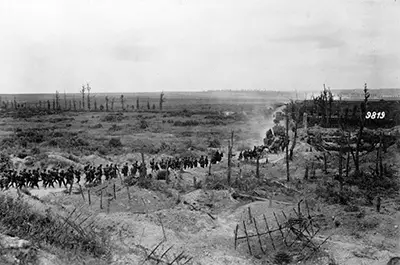Second Battle of the Marne
German Backstory
The Second Battle of the Marne was considered the last major offensive on the part of the Germans in World War 1. The choice to attempt to retake Marne a second time came late in the war when it was clear they had lost ground, and also the war. Securing Marne would be a huge tide in turning the war back in their favor.
The battle is said to have been relatively short compared to the rest of World War 1, and only lasted from July 15th-August 5th of 1918. German Chief of Staff Erich Ludendorff put a plan into place that would bring the war to Flanders, where the Germans would have an advantage further north.
By using Marne as a diversion, he would be able to bring most of the Allied force from Belgium to Marne. The German First and Third Army were strong, and started their attack east of Reims. The remaining soldiers comprised of several divisions in the German Army then attacked simultaneously from the west. It was a good tactical plan that would split the French forces.
Allied forces had combined troops from several countries, and had more resistance than the Germans anticipated. The attack to the east with the First and Third Army were stopped at only 11 a.m. on the first day it started.
The west attack gained more ground, and even broke through the French Sixth Army into the Marne at Dormans. A huge amount of troops from the Allied forces were expecting them, and stopped the advance of the German forces to the West.


French Backstory
The French were not alone on either side, easy or west. They were bolstered with troops from the U.S., British and Italian armies. Commander Ferdinand Foch of the French Army put together a counter-offensive against the now pinned down Germans on the 18th of July, with a massive 24 divisions attacking just from France’s side.
Over 350 tanks were sent out to push back the Germans, and was wildly successfully. On July 20th Germany officially retreated, and on August 3rd they were back in the same position they started the Marne offensive in. The diversion turned into a complete disaster for Germany, leading to a complete cancellation of the attack in Flanders.

Why Did Germany Invade Marne A Second Time?
Marne was meant to be a diversion so that the Germans could continue north to Flanders, possibly overturning a losing war. They didn’t account for the large amount of casualties on their side, which totaled 168,000.

Who Was Affected?
Germany was affected the most, as this was the last large scale attack they made in World War 1. The war was already lost before this attempt, and now it was officially lost with the cancellation of the Flanders attack.
France fought bravely but suffered the second most losses with 95,000 men, while Britain lost 13,000 and the U.S. lost 12,000.

Names to Remember
Crown Prince Wilhelm was vocal about the war being lost for Germany, long before the Second Battle of the Marne took place. He recommended Germany seek peace in 1917, calling the war senseless. His voice went largely ignored, even after the Second Battle of the Marne was lost. Wilhelm was a respected General, and at one point was asked to endorse Hitler’s Nazi party. He declined, and lived the rest of his life with his wife in peace as a private citizen.

Important Facts
Here are some important things to remember about the Second Battle of the Marne.
- The battle was a diversion so the Germans could attack north at Flanders
- Crown Prince Wilhelm had opposed the war for over a year
- Over 168,000 German men were lost due to the failed attempt in Marne
- Over 100,000 Allied force soldiers were lost in the win for Marne
- The battle was such a disaster for Germany that it cemented their loss in the war
Summary
As the last big war of World War I, the Allied forces fought bravely to keep Germany’s plan from being successful. The large amount of forces on the Allied side was an unexpected surprise, and was just enough to secure Marne and deliver a finishing blow to Germany.



